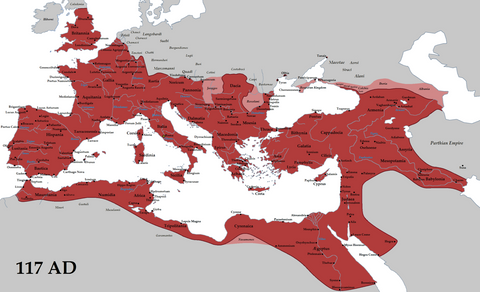Roman Empire vs the Mongol Empire (Part 1)
2 minute read
Both the Roman and Mongol Empires were juggernauts of their times. With vast swaths of territory and tens of millions of conquered peoples living in their realms, these Empires would be unrivaled until the late British Empire.
In Part 1 of this 2-part series, we explore, briefly, the rise and fall of these two great powers. In Part 2, we will compare and analyze them on several criteria.
Roman Empire

Tracing its roots to the 6th century BC with the founding of the Republic, the Roman Empire began humbly. Consisting of nothing more than the city of Rome and a few outlying towns, it gradually expanded until it began to reach beyond the Italian peninsula around the 3rd century BC. In the 2nd century BC, the Republic of Rome began to suffer internal discord while simultaneously beginning to rapidly expand its borders. This led to the need for a strong central command and, eventually, the first dictator Julius Caesar.
Julius Caesar was assassinated in 44 BC. His adopted son Octavius and Marc Antony divided the Empire between them, then eventually attacked each other. Octavius won and was given the title of princeps, meaning “first citizen”, and the name Augustus in 27BC. Augustus was well-liked because he ended a century of turmoil and strife, and his rule began the start of what was called the Pax Romana, a 2-century long peace where the Empire flourished.
As with all good things, this was not to last, and the Empire eventually fell into turmoil around 180 AD. After a century, Aurelian managed to stabilize the empire and Diocletian fully restored it. Rejecting the title of princeps, he became the first ruler to take the actual title of Emperor. Apparently happy with his deeds, he divided the empire into separate parts, each ruled by its own ruler, then abdicated the throne. This didn’t work, and it was up to Constantinian the Great to fix the mess. Constantinian established a second capital in the East called, appropriately enough, Constantinople. After a later ruler Theodosius I died, the Western side of the Empire began to disintegrate due to immigration and invasion problems from the Germanic peoples, and was basically gone after only a short century. The East side was much more successful and lasted for another thousand years before finally falling.
Mongol Empire

Compared to the slow build up of the Roman Empire, the Mongol Empire hit like a lightning strike. The Mongols were disorganized nomadic tribes that usually couldn’t get along and were encouraged in their internal strife by their neighbors in order to keep them under control. That all changed, however, with the rise of Genghis Khan, who united the tribes in 1206 AD and set out to build himself an Empire.
He moved quickly, taking over what is now Northern China, eastern Persia, and Ukraine. By his death, the Mongol Empire was twice the size of the Roman Empire at its peak. He died in 1227, a mere 21 years after his conquest began. Due to questions over the paternity of his oldest son, he was forced to name his third son Ogedei as his heir. Ogedei expanded the empire, incorporating southern China and southern Persia. He reached as far as Korea, though he did not succeed in annexing the peninsula, instead forced to rule it politically through marriage. He also invaded parts of India, though he eventually had to withdraw. After one of his sons died, the Empire lost part of southern China, but managed to expand northward into what is now Russia, taking the capitol Kiev. The Empire expanded into Europe, reaching as far as modern Poland before being halted by news of Ogedei’s death.
Ogedei’s son Guyuk eventually took power, but the Empire was weakened by a period of division when Ogedei’s widow unsuccessfully tried to rule the Empire and one of the most powerful Mongol military leaders refused to recognize her. Guyuk tried to reduce corruption, expand, and maintain the empire. He was sickly and ill, and died during travel, so a man named Mongke became Emperor, marking a switch in power from Ogedei’s line to another son of Genghi’s line Tolui. Mongke sought to expand the Empire, but made some mistakes, allowing significant opposition and a halt to the Mongol’s advances for the first time.
War and strife followed, and eventually a Mongol leader rose to power who succeeded in fully conquering all of China, founding the Yuan dynasty. While his and his descendants’ rule was weaker than those that had gone before, with much of the Mongol Empire being ruled independently by others who did little more than acknowledge the Yuan’s rule and send tribute. The Empire eventually began to collapse due to religious intolerance among its disparate parts, the Black Death, and corruption. Thus marked the end of the Pax Mogolica: a period of piece lasting around a 100 years with great economic growth and relative peace and safety from the Pacific Ocean to the Mediterranean.
Tags: history ·

